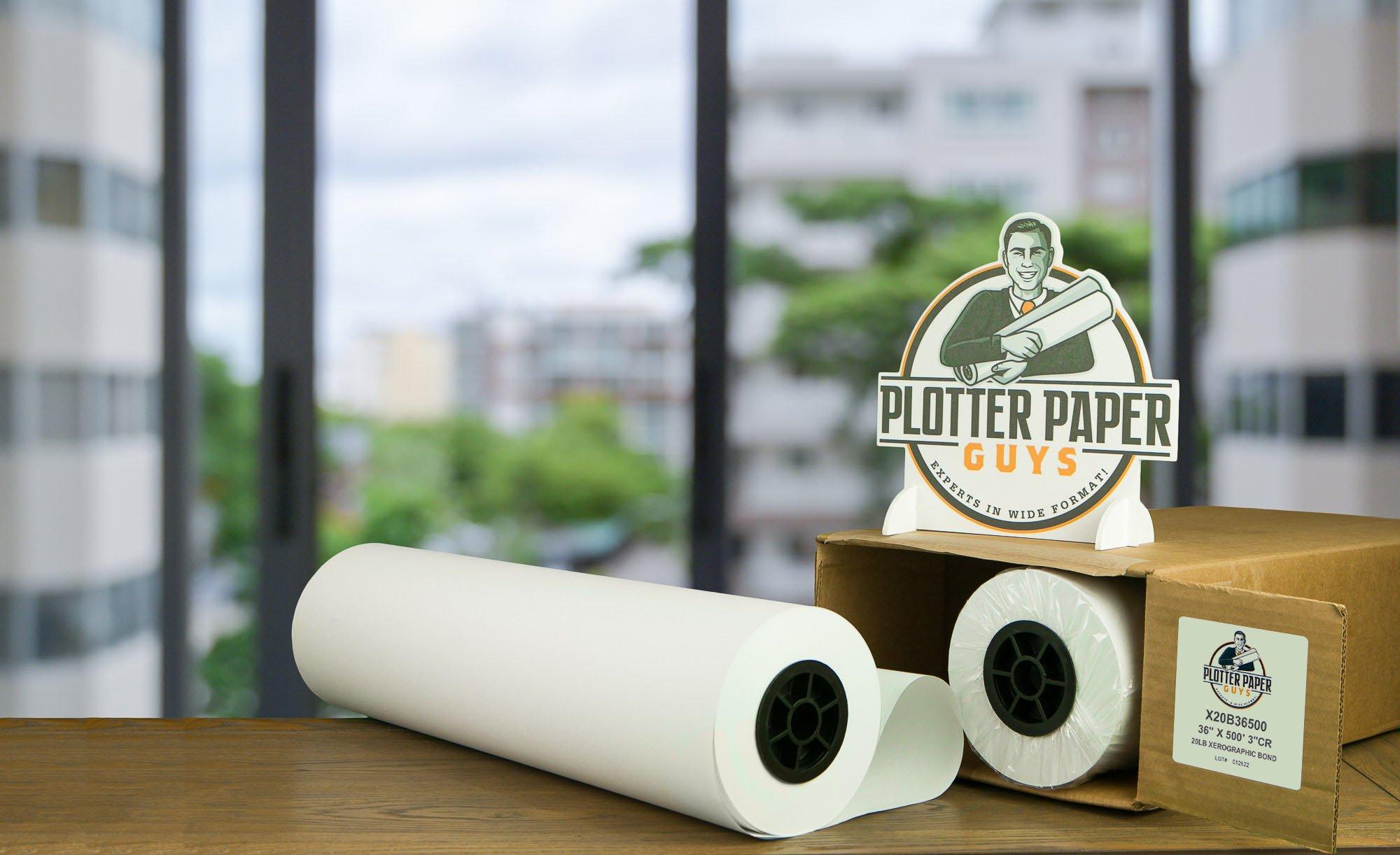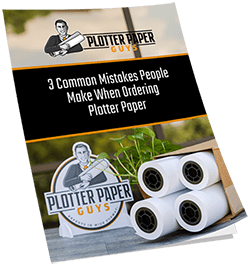Everything You Need to Know About Engineering Roll Paper
Engineering roll bond paper (or engineering bond paper) is a type of plotter paper used in large or wide-format printers by architects, engineers, designers, and CAD operators. This type of paper is necessary for drawings, designs, and graphics that need to be printed in large formats without losing their crisp detail. Read on to learn more.
A Brief History of Plotter Paper
Traditional printers and paper use raster graphics. Raster graphics, also referred to as bitmap graphics, are two-dimensional digital images made up of tiny rectangles called pixels. These pixels are arranged in a grid (or raster) to form an image. Raster images are resolution-dependent and only work well when they are displayed at a specific resolution. When they are enlarged, they lose their quality and appear blurry and pixelated.
In contrast, you can use wide-format inkjet or laser printers and plotter paper to print vector graphics that can be scaled to any size without losing their crispness and quality. Engineering bond paper, or plotter paper rolls, are inserted into this type of printer and a series of print heads eject tiny droplets of ink onto the paper, quickly producing printed images of a much higher quality. This method is often used for technical illustrations, graphic media, blueprints and other complex designs that cannot afford to lose their quality or detail. Plotter paper can also be used in engineering copiers to copy large drawings with complex detail.
Engineering Roll Paper Sizes
As its name indicates, engineering roll paper is distributed in wide-format rolls of varying widths and lengths. Purchasing your paper on a roll enables you to print higher volumes of materials with limited interruptions. In addition to length and width, engineering roll paper is also available in different paper weights and thicknesses.
All of these specifications can get a bit confusing when you are shopping for the right engineering roll paper online. To ensure you choose the right paper for your needs and your printer, consider the following:
- Paper Weight: This is the weight in the basis size of a particular grade of paper. Typically, the larger your document and the higher the quality, the heavier the paper weight should be. The standard and most common weight of plotter paper is 20 lb.
- Roll Width: The width of the paper roll, listed in inches. This is the first number listed on the specification when viewing paper rolls online. For example, if the specification says 36” X 150’ Roll, 36” is the roll width. The most common widths for large format printers are 11, 17, 18, 22, 24, 30, 34, 36, and 42 inches. Always be sure that the width of the roll fits into the type of printer you’re using.
- Roll Length: The length of plotter paper on the roll, measured in feet. Using the same specification as above, 36” X 150’ Roll, 150’ is the roll length. Plotter paper rolls are typically 150, 300 or 500 feet in length. If you are printing more frequently or are printing longer documents, you will need to order paper rolls of longer lengths to avoid reloading your printer more frequently (keep in mind the compatibility of your printer, to determine the length that you order).
- Core Diameter: The diameter of the tube that the plotter paper is wrapped around.. Engineering roll paper for inkjet printers comes on cardboard tubes that are two inches (2”) in diameter. Rolls of paper used for xerographic copiers typically have 3” diameter cores.
- Thickness: The thickness of the paper is also referred to as the “caliper” and is measured in millimeters (mm), which is one-thousandth of an inch. The best way to determine which caliper of paper you need is to check the manual or specification sheet for your printer. Paper that is not the correct thickness for your machine might not feed well into the printer and can cause printhead strikes, which will damage the printhead.
Engineering Roll Paper Types
There are several types of plotter paper available to you, and each meets different needs and has its own benefits.
- Premium coated bond: This type of paper is very durable and has a special, water-resistant surface treatment for the best plotter printing results. This type of paper provides superior ink adhesion and is great for high-volume design applications and documents that include small photographs and colorful images or charts.
- Translucent Bond: This paper type is a more economical alternative to using vellum and films. Because of its increased translucency, this paper requires a lower volume of ink for sharp lines. Ink also dries on it more quickly.
- Vellum: This is a smooth, lightweight plotter paper that is best for the transparent printing of overlays and blueprints.
- Xerographic: This is an affordable, premium paper used for printing xerographic renderings and reproductions. It produces fantastic print quality and is also acid-free, environmentally friendly, and will not deteriorate or become discolored with time.
Coated vs. Uncoated
Another choice you must make is whether to use coated or uncoated paper. This decision will depend largely on how you are using your paper.
Coated bond paper, as the name indicates, has a clay coating, or surface treatment added to it. This treatment makes the paper’s surface less porous and prevents ink droplets from dispersing through the paper’s fibers. Coated bond paper is great for sharp, vibrant, and accurate printing of lines, smaller text, photographs, and colored drawings.
Uncoated bond paper lacks this surface treatment. It has a more porous surface and is better used for everyday line drawing, printing, and copying. Uncoated bond paper is appropriate for use with monochromatic plotters, engineering copiers, inkjet printers, pen-and-ink drawings, and graphite drawings. The ink applied to uncoated bond paper also dries more quickly due to the lack of coating.
Where Can I Buy Engineering Roll Bond Paper?
Now that you’re well versed in the types and specifications of engineering roll paper, all that remains is where to make your purchase.
Plotter Paper Guys stocks a variety of engineering roll paper to fit your individual and business needs. We manufacture most of the paper we sell and ship it directly from our warehouse, getting you the right product as quickly as possible.
If you’re still unsure about which type or size of paper to get, our industry and product experts can help. Visit our website today, or find more helpful information by going to our blog.




